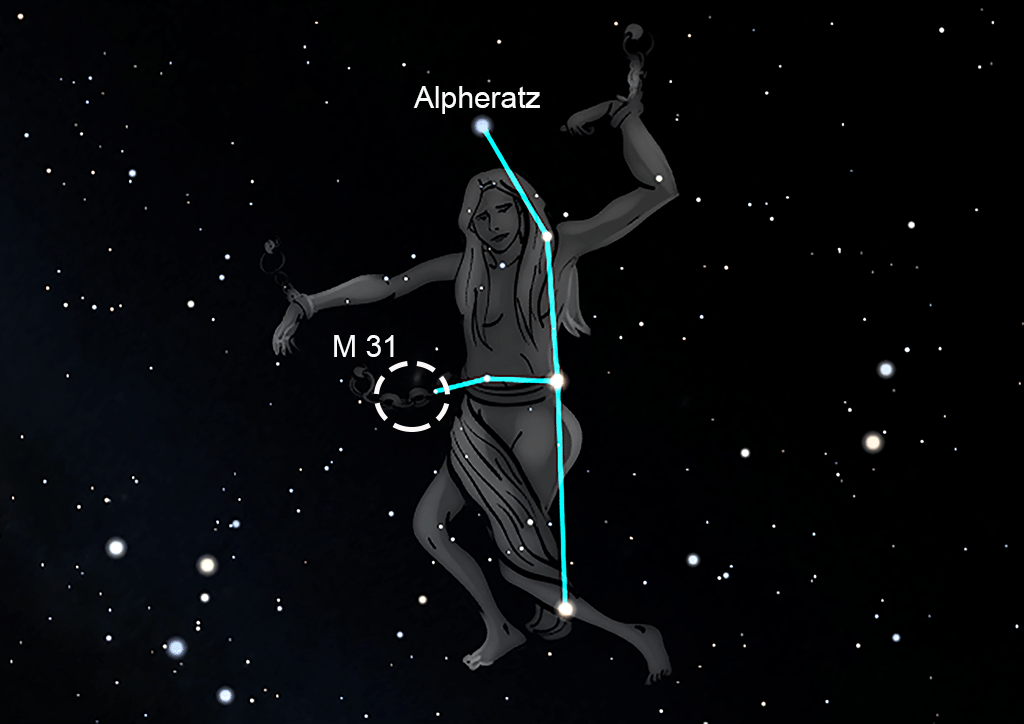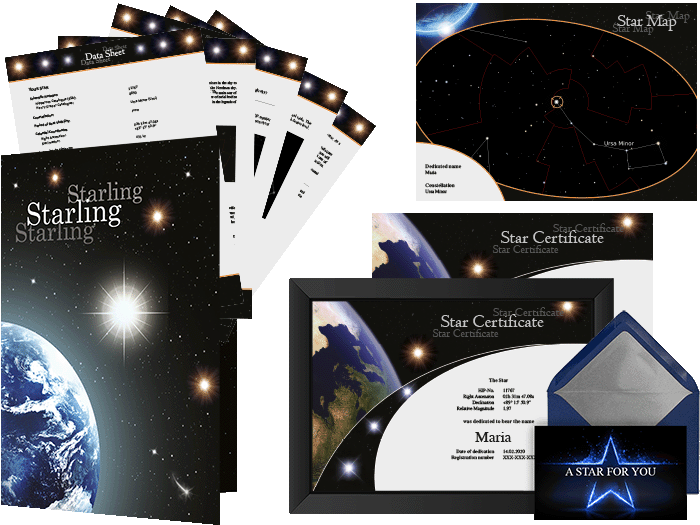Brightest star: Alpheratz (α And)
Relative brightness: 2.06 mag
Hipparcos catalogue: HIP 677
Visible in the northern sky: All year round (mostly circumpolar)
(Berlin [Germany], 22:00 CET on the 1st of each month)
Visible in the southern sky:
September to January (on the horizon)
(Sydney [Australia], 22:00 AEST on the 1st of each month)
Area: 722 deg² (rank: 19 out of 88)
Right ascension: 22h 57m 22s to 2h 39m 33s
Declination: +21° 40' 36'' to +53° 11' 13''
Neighbouring constellations: Cassiopeia, Lacerta, Pegasus, Pisces, Triangulum, Perseus
The constellation Andromeda
The constellation Andromeda is a constellation of the northern hemisphere. It is predominantly circumpolar to the North Pole. This means that most stars of the constellation are so close to the celestial pole that they never set. Thus, the largest part of the constellation is visible all throughout the year in the northern hemisphere.
The brightest star of the constellation is the α Andromedae which bears the name Sirrah or Alpheratz. Both names are derived from the Arabic expression Al Surrat al Faras (horse navel). The name comes from the fact that, in older star charts, the star was assigned to the constellation Pegasus.
The most famous object of this constellation is the Andromeda Nebula (M 31). The Andromeda Nebula is a galaxy of its own. Its light has travelled over 2 million light-years before it is visible on Earth. The Andromeda Nebula is the farthest object yet visible to the naked eye. The galaxy in which the earth is located is the Milky Way.
Mythology
According to Greek mythology, King Cepheus was the king of Ethiopia. He was a descendant of the nymph Io who was a lover of Zeus. Cepheus was married to the vain Cassiopeia who brag about being even more beautiful than the Nereids, the fifty daughters of the sea god Nereus. As a result, the sea god Poseidon, who was married to one of the Nereids, sent the sea monster Cetus to the coast of Cepheus' kingdom. Seeking help, Cepheus turned to the oracle of Ammon. The oracle told him to chain his daughter Andromeda to a rock and sacrifice her to the monster. This would be the only way to stop the devastation off his coast. In his despair, Cepheus followed the advice of the oracle. However, Andromeda was rescued just in time by the hero Perseus. He then claimed the hand of Andromeda. Although Andromeda had already been promised to her uncle Phineus, Cepheus agreed. Finally, at the marriage ceremony, there was a fight between Perseus and Phineus. In the course of this fight, Perseus presented the head of the Medusa to Phineus. Phineus turned to stone immediately.
Cepheus, Cassiopeia, Andromeda, Perseus and the monster Cetus (whale) were later transferred to the sky as constellations.

